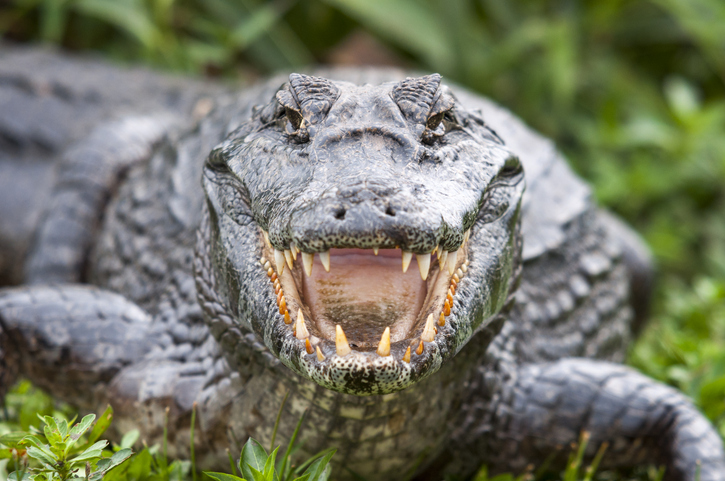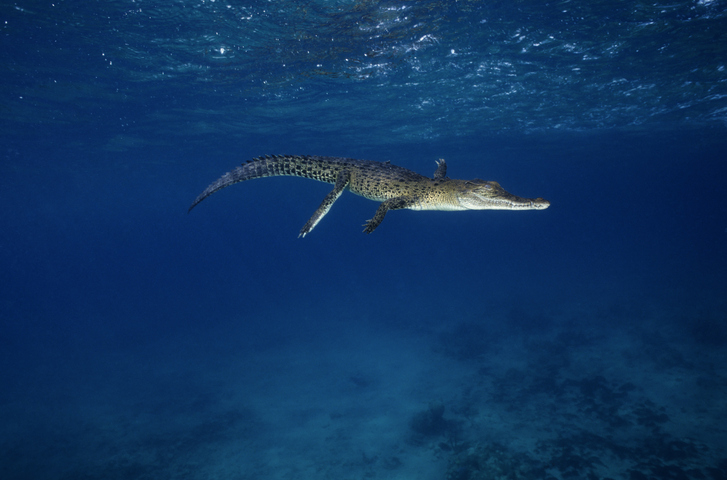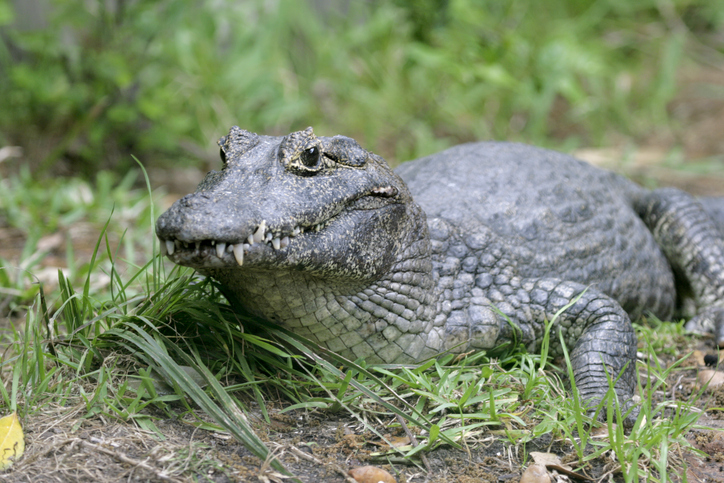
Having been around for over 250 million years, it seems crocodilians are perfectly adapted to life on Earth. These are some of the most resilient animals ever to walk (or, of course, swim) the planet, so what’s the secret to their success?
Well, aside from their powerful bite, thick, armour-like scales and formidable jaws, sheer speed could have a lot to do with it. Crocodilians like crocodiles, alligators and caiman are surprisingly brisk both in water and on land, though their max speed is dictated by their species, size and other characteristics.
So, how fast are crocodiles exactly? We’re taking a look at just how rapid these reptiles are in and out of the water.
How fast can crocodiles swim?
Since most crocodilians spend much of their lives beneath the surface, it makes sense to start with just how fast these guys can swim.
OK, are you ready for this? Scientists reckon some crocodiles can reach swim speeds in excess of 18 mph! That might not sound all that fast compared to, say, a great white shark, but it’s still impressively speedy. In fact, it’s 10 mph faster than one of the fastest human swimmers to ever grace the swimming pool, 28-time Olympian Michael Phelps.
Of course, not all crocodilians can reach these swim speeds, with the fastest species thought to be the imposing saltwater crocodile (Crocodylus porosus). Generally, the larger the animal the faster it can swim, with a croc’s top speed dictated by the length of its powerful tail, used to help propel these creatures through the water.
It’s important to point out, too, that crocodilians like the Cuvier’s dwarf caiman (Paleosuchus palpebrosus) rarely ever swim at their top speed for more than a few seconds at a time; any longer would be much too energy-intensive. Instead, they swim only in short bursts when ambushing prey or, in the case of smaller species, evading predators.

How fast can crocodiles run?
Crocodilians may be mostly amphibious but they do venture onto land occasionally, particularly to lay eggs, dig burrows and land an opportunistic snack. So, when they step onto terra firma, how fast can they travel?
Judging by their short, stumpy legs, you’d be forgiven for assuming that crocs are slow and ill-suited to survival on land. But the truth is that all species of crocodilians are capable of some impressive speeds out of the water, with some animals recorded at speeds of over 20 mph!
That’s not to say that alligators, caiman and crocodiles spend their lives racing along the water’s edge – quite the opposite, in fact. As with their max swim speeds, these reptiles only “gallop” (that’s right, crocs can gallop much like a horse) when they absolutely have to, and on land, that’s usually when they feel threatened and are keen to return to the safety of the water.
Generally speaking, crocodilians enjoy the slower pace of life on dry land, basking in the sun and sliding on their bellies to get around. Sure, they may walk or run on occasion, but mostly they are content to slide in and out of the water at a leisurely pace.
When crocodilians choose to, however, they can use that formidable pace and acceleration to catch prey, particularly animals that have strayed too close to the water’s edge. These reptiles are known to hide in the shallows before launching a spring attack on their unsuspecting victims, with their powerful tails and muscular legs helping them to hit their top, semi-amphibious speed almost instantly.

Crawling, walking and galloping: How crocs get around on land
It’s a fact that crocodilians spend most of their lives in the water; it’s here where they feel safest and do all of their hunting. But when they do come ashore, there are three different ways they can choose to move: crawling (or sliding), walking and galloping.
Crawling and sliding
This is the go-to way for most crocodilians to travel on land. Lying flat on their smooth, armoured bellies, they simply slide along the ground, using their front and rear legs simultaneously to help propel them forward at an easy, languid pace.
Don’t be fooled, though, because a crawling croc is no slouch. Should they choose to, a crocodile can make its belly more rigid and move its tail from side to side, increasing its slide speed dramatically.
Walking
Should they have somewhere to be, crocodilians can bring their feet inwards under their bodies, lift their bellies, and adopt a high gait that allows them to walk easily over the surface. They may walk rather than crawl on dry ground when friction can make sliding less efficient.
As you’d expect, walking is a much pacier way for a croc to get around, with an average speed of around 5-10 mph depending on the species.
Galloping
Crocodilians including crocodiles, alligators and caiman rarely gallop, but when they do, it’s a formidable sight to behold. Arching their backs upwards, they’re able to propel themselves forward on both sets of legs simultaneously, exactly like a horse or a dog. Don’t believe us? See for yourself.
“Running” in this way is super energy-intensive for all crocodilian species, so you’ll only ever see them do it for a few seconds at a time. They much prefer reserving their energy for the water, where they truly excel as one of the world’s most successful amphibious predators.
So there you have it, a definitive look at just how fast our crocodilian counterparts are on land and in water. Here at Blue Reef Aquarium, our Tropical Rivers exhibit is home to the amazing dwarf caiman, so why not plan your next visit and get up close to these otherworldly, dinosaur-like animals for yourself?
